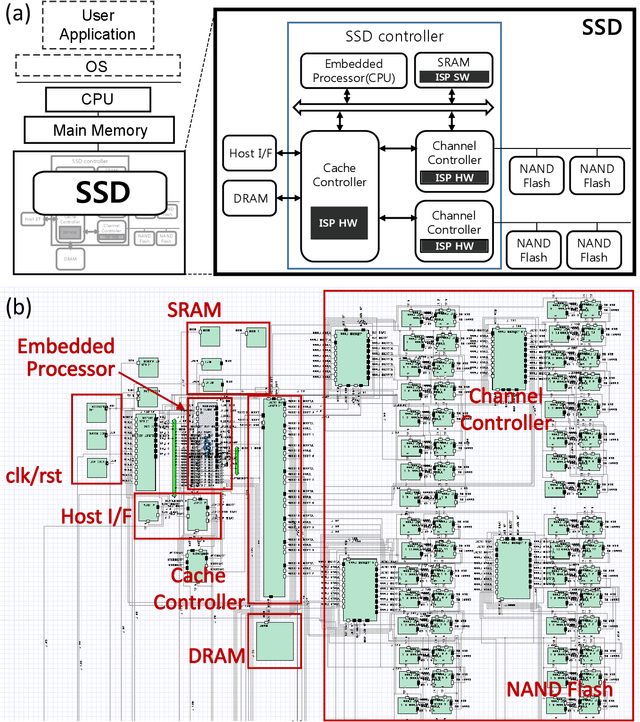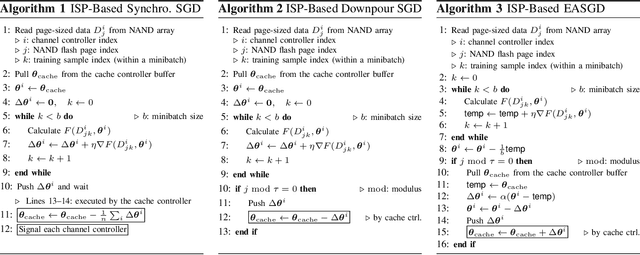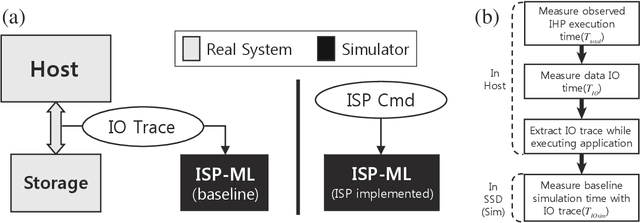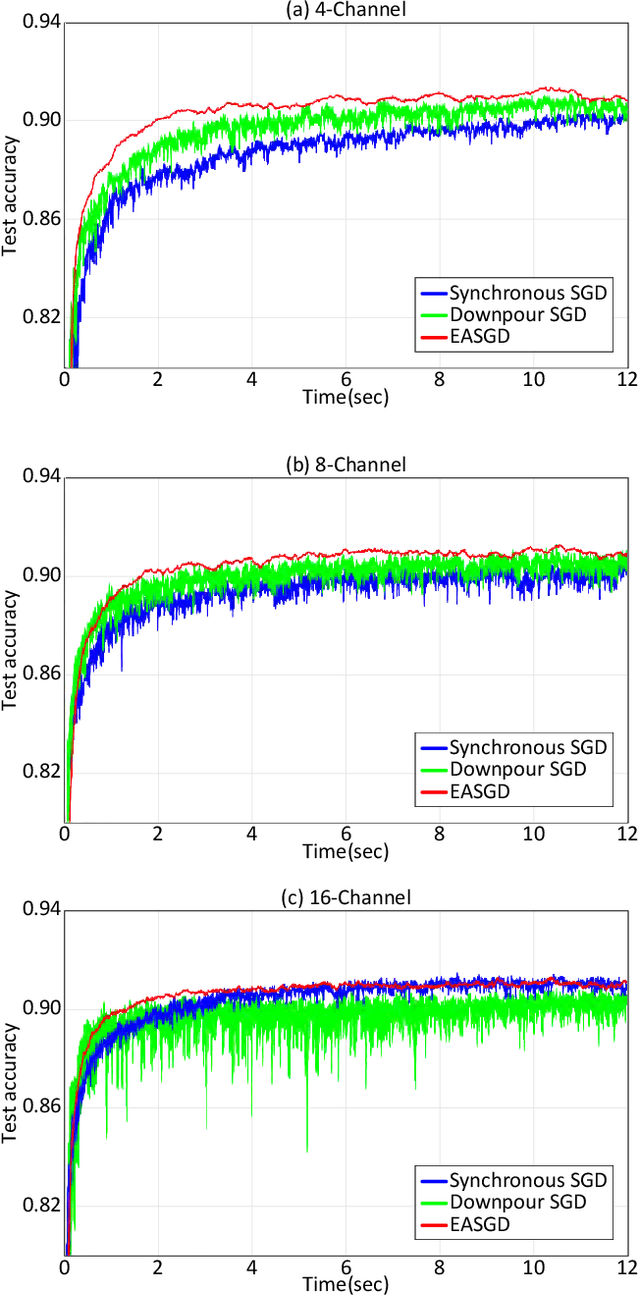Near-Data Processing for Differentiable Machine Learning Models
Paper and Code
Apr 28, 2017



Near-data processing (NDP) refers to augmenting memory or storage with processing power. Despite its potential for acceleration computing and reducing power requirements, only limited progress has been made in popularizing NDP for various reasons. Recently, two major changes have occurred that have ignited renewed interest and caused a resurgence of NDP. The first is the success of machine learning (ML), which often demands a great deal of computation for training, requiring frequent transfers of big data. The second is the popularity of NAND flash-based solid-state drives (SSDs) containing multicore processors that can accommodate extra computation for data processing. In this paper, we evaluate the potential of NDP for ML using a new SSD platform that allows us to simulate instorage processing (ISP) of ML workloads. Our platform (named ISP-ML) is a full-fledged simulator of a realistic multi-channel SSD that can execute various ML algorithms using data stored in the SSD. To conduct a thorough performance analysis and an in-depth comparison with alternative techniques, we focus on a specific algorithm: stochastic gradient descent (SGD), which is the de facto standard for training differentiable models such as logistic regression and neural networks. We implement and compare three SGD variants (synchronous, Downpour, and elastic averaging) using ISP-ML, exploiting the multiple NAND channels to parallelize SGD. In addition, we compare the performance of ISP and that of conventional in-host processing, revealing the advantages of ISP. Based on the advantages and limitations identified through our experiments, we further discuss directions for future research on ISP for accelerating ML.
 Add to Chrome
Add to Chrome Add to Firefox
Add to Firefox Add to Edge
Add to Edge